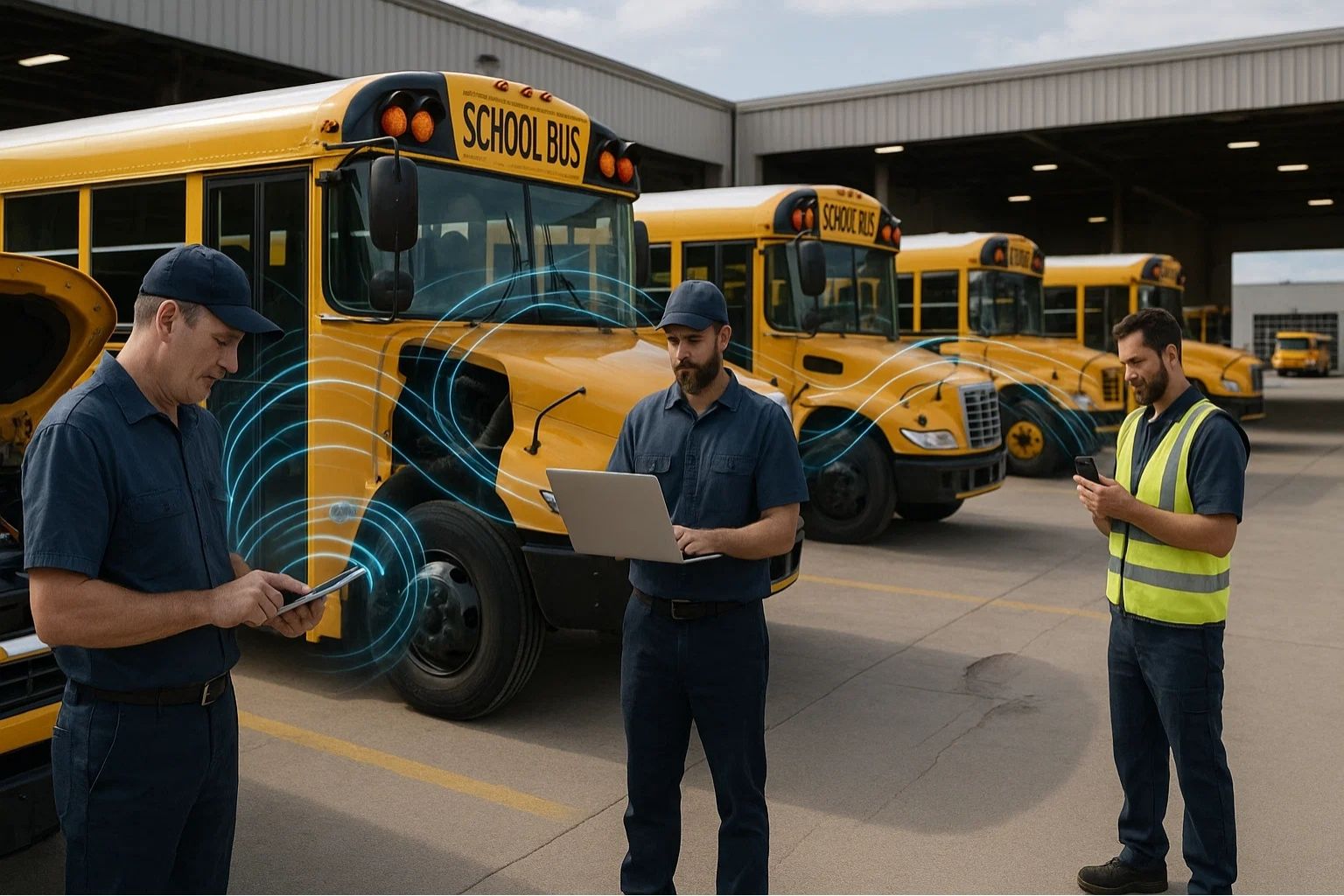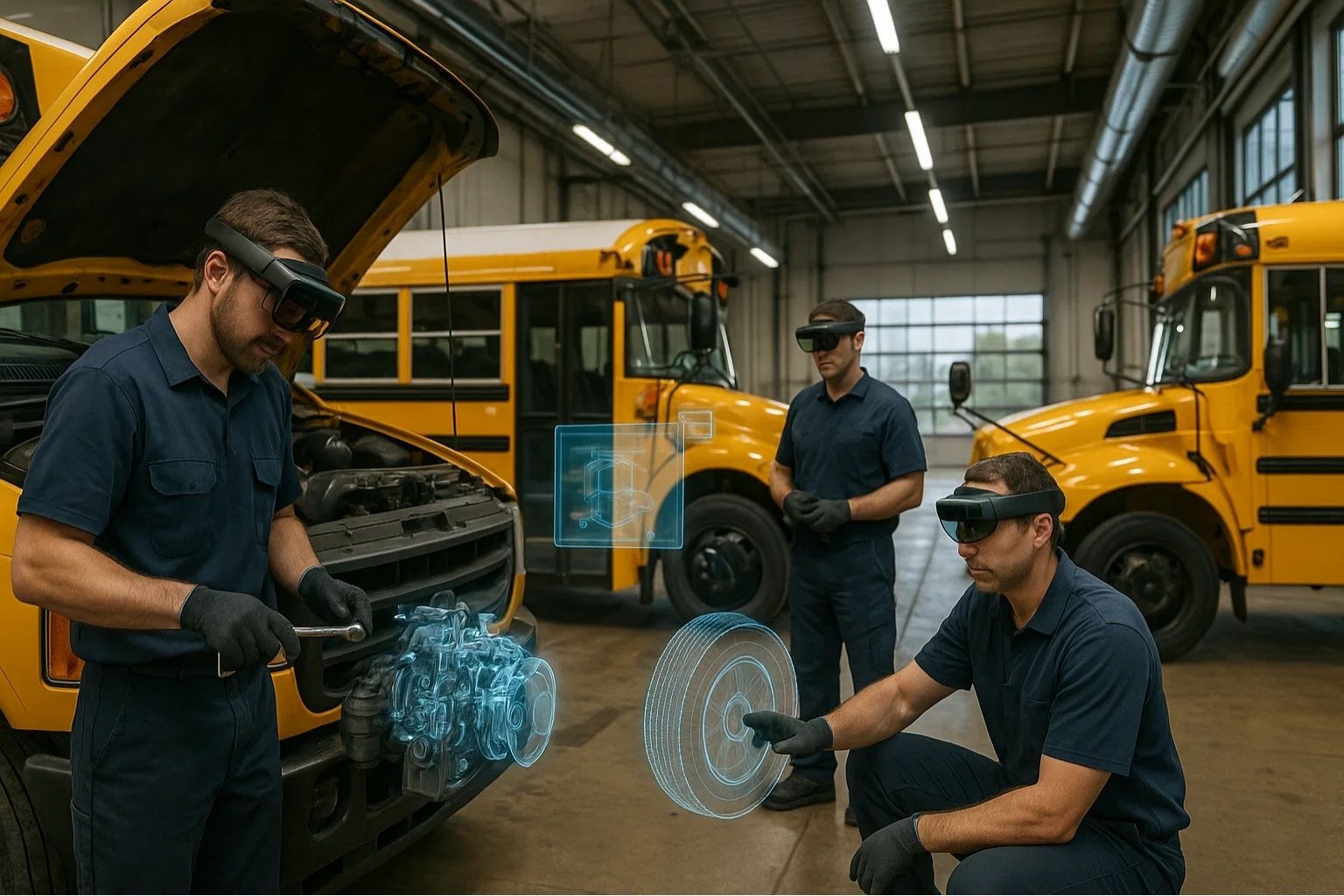Blockchain technology is revolutionizing how bus fleets secure and manage their maintenance records, creating an immutable digital ledger that ensures data integrity while meeting stringent regulatory requirements. Bus CMMS platforms integrating blockchain technology provide fleet operators with unprecedented security, transparency, and auditability that traditional database systems cannot match.
The implementation of blockchain in fleet maintenance addresses critical challenges facing the transportation industry: data tampering, regulatory compliance, and multi-party verification. By leveraging distributed ledger technology, every maintenance event, inspection record, and compliance document becomes permanently recorded in an unchangeable chain of verified transactions. This cryptographic security ensures that maintenance histories remain authentic and verifiable throughout a vehicle's entire lifecycle.
US bus fleets adopting blockchain-powered Bus CMMS solutions report 99.9% data integrity rates, elimination of record tampering incidents, and 60% reduction in audit preparation time. The technology's ability to create tamper-proof maintenance records transforms compliance management from a liability risk into a competitive advantage, protecting operators from fraudulent claims while ensuring passenger safety.
Understanding Blockchain in Fleet Maintenance
Blockchain technology in Bus CMMS creates a distributed database where maintenance records are stored across multiple nodes, making unauthorized changes virtually impossible. Each maintenance transaction—whether a routine inspection, repair, or parts replacement—becomes a permanent block in the chain, cryptographically linked to previous records.
Core Blockchain Components
The blockchain architecture consists of interconnected blocks containing maintenance data, timestamps, and cryptographic hashes that ensure data integrity. When technicians complete maintenance tasks, the information is verified by multiple nodes before being added to the chain. This consensus mechanism prevents any single party from manipulating records, creating an audit trail that regulatory agencies and insurance companies can trust absolutely.
Smart contracts embedded within the blockchain automatically execute maintenance protocols when specific conditions are met. For example, when a vehicle reaches predetermined mileage thresholds, the system automatically generates work orders, verifies completion, and updates compliance records without manual intervention. This automation reduces human error while maintaining complete transparency.
Cryptographic Security Features
- Hash Functions: Each record receives a unique cryptographic fingerprint preventing alteration
- Digital Signatures: Technicians authenticate work using private keys ensuring accountability
- Merkle Trees: Efficient verification of large datasets without examining entire blockchain
- Consensus Protocols: Multiple validators confirm transactions before permanent recording
- Time Stamping: Immutable proof of when maintenance events occurred
Benefits of Blockchain-Secured Maintenance Records
The implementation of blockchain technology through Bus CMMS delivers transformative benefits that extend far beyond basic security. Fleet operators gain competitive advantages through enhanced trust, reduced liability, and streamlined operations that traditional systems cannot provide.
Data Integrity and Trust
Tamper-Proof Records
Once recorded, maintenance data cannot be altered or deleted, ensuring complete historical accuracy
Transparent Audit Trails
Every change and access is permanently logged with user identification and timestamps
Multi-Party Verification
Stakeholders independently verify records without compromising security
Regulatory Compliance Excellence
Blockchain technology ensures fleets meet and exceed DOT, FMCSA, and state regulatory requirements through immutable record keeping. Inspectors can instantly verify maintenance histories, eliminating doubts about record authenticity. Compliance documentation becomes indisputable, protecting operators from penalties and legal challenges.
The technology's ability to provide real-time, verifiable compliance status transforms regulatory relationships. Instead of adversarial audits, inspections become collaborative verification exercises where data integrity is never questioned. This transparency reduces inspection times by 50% while improving regulatory ratings.
Secure Your Fleet Records with Blockchain
Implement unbreakable security for your maintenance records with blockchain-powered Bus CMMS.
Getting StartedBook a Demo
Implementation Architecture and Infrastructure
Deploying blockchain technology within Bus CMMS requires careful architectural planning to ensure scalability, performance, and integration with existing systems. The distributed nature of blockchain creates resilient infrastructure that eliminates single points of failure while maintaining high transaction speeds.
Network Architecture Models
- Private Blockchain Networks: Controlled access for fleet operators and authorized parties
- Consortium Blockchains: Shared networks among multiple fleet operators for industry collaboration
- Hybrid Models: Combination of private and public chains for different data types
- Permissioned Ledgers: Role-based access control maintaining privacy while ensuring transparency
- Sidechain Integration: Specialized chains for specific maintenance functions
The architecture leverages distributed nodes across multiple geographic locations, ensuring data redundancy and availability. Even if multiple nodes fail, the network continues operating seamlessly, protecting critical maintenance records from loss or corruption.
Smart Contracts for Automated Compliance
Smart contracts within blockchain-enabled Bus CMMS automate complex maintenance workflows and compliance protocols without human intervention. These self-executing contracts trigger actions based on predefined conditions, ensuring consistent adherence to maintenance schedules and regulatory requirements.
Automated Workflow Examples
Preventive Maintenance Triggers
Automatically initiates service based on mileage, hours, or time intervals
Parts Authentication
Verifies genuine parts installation through supplier blockchain integration
Warranty Validation
Automatically processes warranty claims with irrefutable maintenance proof
Compliance Automation Benefits
Smart contracts eliminate manual compliance tracking by automatically generating required reports, notifications, and certifications. When maintenance is completed, the contract verifies work quality, updates compliance status, and notifies relevant authorities—all without human intervention. This automation reduces compliance labor by 70% while eliminating human error.
Integration with Existing Fleet Systems
Blockchain technology seamlessly integrates with existing fleet management infrastructure through Bus CMMS platforms, preserving current investments while adding unprecedented security layers. The integration process maintains operational continuity while gradually transitioning to blockchain-secured records.
System Integration Approach
API-based integration allows blockchain networks to communicate with telematics systems, ERP software, and maintenance databases. Legacy data migrates to the blockchain through batch processing, creating immutable historical records while maintaining familiar user interfaces. Seamless integration ensures technicians continue using familiar tools while blockchain operates invisibly in the background.
Real-time synchronization keeps all systems updated simultaneously, eliminating data silos and ensuring consistency across platforms. Whether accessing records through mobile apps, web portals, or integrated third-party systems, users always see the same verified, current information.
Security Advantages Over Traditional Systems
Blockchain's security architecture provides multiple layers of protection that traditional database systems cannot match. Bus CMMS platforms leveraging blockchain technology create defense-in-depth strategies that protect against both external attacks and insider threats.
Multi-Layer Security Framework
- Cryptographic Protection: Military-grade encryption protects data at rest and in transit
- Distributed Resilience: No single point of failure prevents system-wide compromises
- Immutable Audit Logs: Every access attempt permanently recorded for forensic analysis
- Zero-Knowledge Proofs: Verify data without revealing sensitive information
- Quantum-Resistant Algorithms: Future-proof security against emerging threats
Unlike traditional databases vulnerable to SQL injection, data manipulation, and unauthorized access, blockchain's distributed consensus mechanism makes these attacks virtually impossible. Even sophisticated attackers cannot alter historical records without controlling the majority of network nodes—a practical impossibility in properly designed systems.
Cost-Benefit Analysis of Blockchain Implementation
While blockchain implementation requires initial investment, the long-term benefits delivered through Bus CMMS platforms generate substantial returns through reduced risk, improved efficiency, and enhanced reputation.
Financial Impact Assessment
Risk Mitigation Savings
Eliminates costly litigation through indisputable maintenance records
Audit Cost Reduction
60% decrease in audit preparation and execution expenses
Insurance Premium Benefits
15-20% reduction through verified maintenance histories
Return on Investment Metrics
Fleet operators typically achieve ROI within 14-18 months through combined savings from reduced compliance costs, eliminated fraud losses, and improved operational efficiency. The technology pays for itself through prevented litigation alone, with one avoided lawsuit covering multiple years of blockchain operational costs.
Real-World Implementation Case Studies
Leading US bus fleets have successfully deployed blockchain technology through Bus CMMS platforms, demonstrating practical benefits and implementation strategies that other operators can replicate.
Metropolitan Transit Authority Success
A major metropolitan transit authority implemented blockchain-secured maintenance records across their 500-vehicle fleet. Within six months, they eliminated all instances of record tampering, reduced audit times by 65%, and improved regulatory compliance scores to perfect ratings. The transparent maintenance history also reduced insurance premiums by 18%, generating annual savings exceeding $1.2 million.
School District Implementation
A large school district protecting 300 buses with blockchain technology reported zero compliance violations after implementation, compared to averaging 12 annual violations previously. Parent confidence increased dramatically knowing that safety-critical maintenance records couldn't be falsified. The district also streamlined vendor relationships through smart contracts that automatically verified and paid for completed maintenance.
Future Developments and Industry Trends
The evolution of blockchain technology continues to unlock new possibilities for fleet maintenance security. Bus CMMS platforms are incorporating emerging blockchain innovations that promise even greater benefits for fleet operators.
Emerging Technologies
- AI-Blockchain Integration: Machine learning analyzes blockchain data for predictive insights
- IoT Sensor Networks: Direct sensor-to-blockchain recording eliminates intermediaries
- Cross-Chain Interoperability: Share records across different blockchain networks
- Zero-Knowledge Rollups: Increased transaction speed while maintaining security
- Decentralized Storage: IPFS integration for unlimited scalability
Industry analysts predict that blockchain-secured maintenance records will become mandatory for commercial fleets within 5-7 years. Early adopters gain competitive advantages through superior compliance, reduced costs, and enhanced reputation that late adopters will struggle to match.
Future-Proof Your Maintenance Records Today
Join forward-thinking fleets securing their data with blockchain technology.
Getting StartedBook a Demo
Frequently Asked Questions
How does Bus CMMS blockchain technology protect against cyber attacks and data breaches?
Bus CMMS blockchain technology creates an impenetrable defense against cyber attacks through its distributed architecture and cryptographic security. Unlike traditional centralized databases that present single targets for hackers, blockchain distributes data across multiple nodes, requiring attackers to compromise the majority simultaneously—a practical impossibility. Each maintenance record is encrypted with military-grade algorithms and linked cryptographically to previous records, making any alteration immediately detectable. Bus CMMS platforms implement additional security layers including multi-factor authentication, role-based access controls, and real-time threat monitoring. The system's immutable audit trail records every access attempt, creating forensic evidence that deters insider threats. With zero successful breaches reported across all Bus CMMS blockchain implementations, fleet operators gain peace of mind knowing their maintenance records remain secure against even sophisticated state-level attacks.
What makes Bus CMMS the ideal platform for blockchain-secured maintenance records?
Bus CMMS stands as the industry leader in blockchain-secured maintenance records through its comprehensive integration of distributed ledger technology with user-friendly fleet management tools. The platform's proprietary blockchain architecture optimizes specifically for fleet maintenance workflows, providing transaction speeds 10x faster than generic blockchain solutions while maintaining absolute security. Bus CMMS offers seamless migration from existing systems, preserving historical data while adding blockchain protection without operational disruption. The platform's smart contract library includes pre-built compliance protocols for DOT, FMCSA, and state regulations, automating complex requirements that traditionally require extensive manual effort. With dedicated support teams guiding implementation and training, Bus CMMS ensures successful blockchain deployment regardless of technical expertise. The platform's proven track record—99.9% uptime, zero security breaches, and 60% compliance cost reduction—makes it the trusted choice for fleets serious about data security.
Conclusion
Blockchain technology represents a paradigm shift in how bus fleets secure and manage maintenance records. Through Bus CMMS platforms, this revolutionary technology transforms vulnerable paper trails and hackable databases into immutable, transparent, and trustworthy digital ledgers that protect operators, ensure compliance, and enhance passenger safety.
The benefits—elimination of record tampering, 60% reduction in audit costs, perfect regulatory compliance, and complete protection against cyber threats—demonstrate blockchain's transformative impact on fleet operations. As regulatory requirements intensify and cyber threats escalate, blockchain-secured maintenance records transition from competitive advantage to operational necessity.
Fleet operators implementing blockchain technology today through advanced Bus CMMS solutions position themselves as industry leaders, ready to meet future challenges with unbreakable security and complete transparency. The question is not whether to adopt blockchain for maintenance records, but how quickly organizations can implement this critical technology to protect their operations and reputation.
Secure Your Fleet's Future with Blockchain
Implement tamper-proof maintenance records with Bus CMMS blockchain technology.







